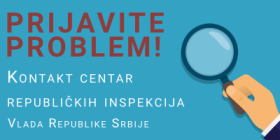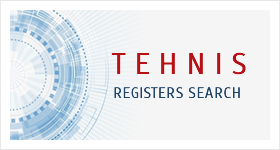New Approach
NEW APROACH (www.newapproach.org)
Unlike the Old Approach, the philosophy of the New approachImplies that European directives define only essential (relevant) requirements for product safety, but the detailed technical content, i.e. elaboration of these essential requirements is contained in, so called, harmonized European standards (which the European Commission "ordered" by the European organizations for standardization).
By fulfilling the requirementsof harmonized standards the manufacturer meets the essential requirements contained in the New approach Directive (presumption of conformity). Considering that fulfilment of requirements of harmonized standards is not the only way to ensure conformity with the essential requirements, the producer can meet the essential requirements on the other way. Voluntary nature of the implementation of European standards is retained in this way.
New approach Directives are based on following principles:
- Harmonization is limited on essential requirements
- Only the products that meet essential requirements can be placed on market and put into use
- It is considered that the harmonized standards, whose reference numbers are published in the official gazette and which are transposed to the national standards, are complied with the relevant essential requirements
- Implementation of harmonized standards or other technical specifications remains voluntary, and manufacturers may freely choose any technical solution that provides conformity with the essential requirements
Producer can choose different conformity assessment procedures, which are provided in implemented directive
Manner of performing conformity assessment with essential requirements is one more important elements of New approach. Conformity assessment is based on so-called Global approach, i.e. modules for conformity assessment. Unlike the old approach, conformity with the requirements of directives confirms producer himself – by Declaration of conformity or Certificate of conformity issued by the authorized body for conformity assessment (in the EU these are notified bodies - can be seen on the web databaseNANDO), and the state is completely retreated from the process of conformity assessment with the prescribed requirements. In this way, responsibility for product is only on the producer, not onthe state or conformity assessment bodies. The New approach applies to the following groups of products: machinery, electrical and electronic equipment, lifts, pressure equipment, toys, telecommunications equipment, construction products, medical devices, personal protective equipment, explosives for civil use and others.
Still, if there are a dangerous (unsafe) productson the market, for which notified body has issued a certificate of conformity with the directive, producer bears responsibility, but he may bring civil action against the notified body that issued the certificate, and therefore it is important and necessary that the conformity assessment bodies provide business insurance with insurance companies.
Unavoidable and certainly one of the best publications on the new approach is The Blue Book, i.e. (Guide to the implementation of directive based on the New Approach and the Global Approach). Serbian translation of the first edition of this Guide is done and published in scope of the project to help development of quality infrastructure in Serbia.
For products outside the scope of old and new approach (non-harmonized area), EU member states are free to prescribe the technical requirements, but in that case,draft technical regulations have to be notified in accordance with Directive 98/34 / EC and 98/48 / EC and within 90 days "freeze" the adoption of such regulations. This "standstill" period may be extended up to 18 months if the other member states provide detailed opinionor if the harmonization in this area, is in the process on the EU level. All those technical regulations in the EU member states, must have a provisionconfirming that notification is completed, as well as the provisionof mutual recognition of products from other Member States, if these products are placed on domestic market lawfully. The most important legal acts of technical legislation in the EU are:
So-called: "NEW goods package"
+
- Directive 98/34/EC of the European Parliament and of the Council of 22 June 1998 laying down a procedure for the provision of information in the field of technical standards and regulations
+
Directives of the New and Old Approach (sectors directives)










